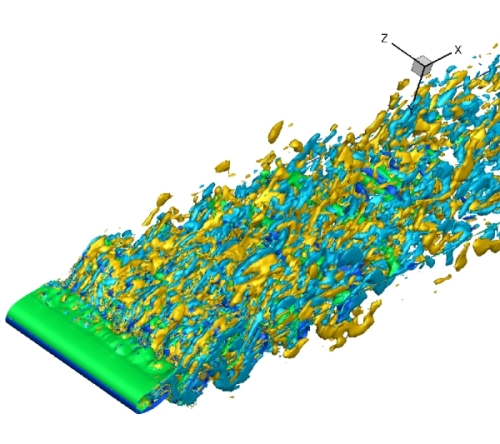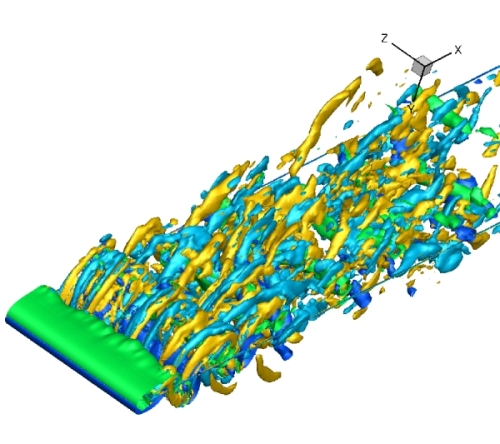 |
|
|
| PhD student: |
Lixia Qu lixiag@chalmers.se |
| Supervisor: |
Lars Davidson lada@chalmers.se |
| Co-supervisor: |
Christoffer Norberg christoffer.norberg@energy.lth.se |
| Co-supervisor: |
Shia-Hui Peng peng@foi.se |
| Cooperation: |
Prof. Wang Fujun, College of Water
Conservancy & Civil Engineering, China Agricultural University wangfj@cau.edu.cn |
| Sponsors: | China Scholarship Council |
| Publications: | [1] |
| Start of project: | September 2010 |
| End of project: | - |
BACKGROUND Circular cylinder is well known as one of the most typical example of bluff bodies. The flow past a circular cylinder is one of the most frequently investigated flow configurations in fluid mechanic research as well. It includes complex phenomena such as vortex shedding, separation and reattachment. Its fundamental importance makes it useful for gaining knowledge of aerodynamic design and control. So far, a vast amount of authors have reported on the variation of the lift-related coefficients with Reynolds number. From previous measurements and numerical simulations, it has been indicated that there is a sharp decrease in the RMS lift coefficient, CLp, between Re=200 and Re=1000, whereas the Strouhal, St, number increases only slightly, about 5%. The physical mechanisms responsible for this behavior in CLp and St are probably related to the intrinsic three-dimensional flow features; they will be further studied in the present project.
PROJECT In 3D numerical simulations, the Reynolds number is varied between from 200 to 1000. The main objective of this work is to study the relation between fluctuating forces and flow structures in the near wake region, as well as the relationship bwtween Reynolds number and three-dimensional instability in the separated region. Moreover, the correlation between the three-dimensional features of the separation and the three-dimensional wake structures is of great interest, especially within the range of Re=200~1000.
REFERENCES
|
|
This page, CFD around circular cylinders, should be part of a frames system at www.tfd.chalmers.se/~lada/projects/proind.html by Webmaster: Ingalena Ljungström ilj@flowsim.se |
